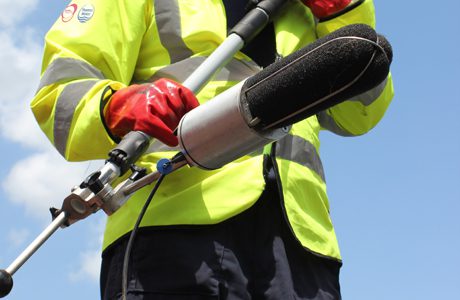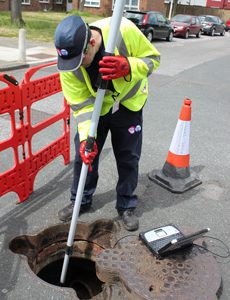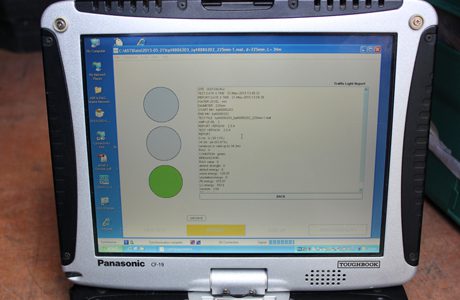
Lanes Group says it has become the first wastewater network contractor in the UK to commercially deploy pipe inspection technology that uses sound to assess the condition of sewers.
The company’s utilities division has worked in partnership with Thames Water to implement the SewerBatt acoustic inspection device, which uses the same echo-location principles that allow bats to fly at night.
The SewerBatt inspection programme has been in operation across the Thames Water region since the start of May, following an intensive development and trials programme lasting 18 months.
For planned sewer maintenance, the technology is already reducing the number of CCTV drainage surveys required by 33 per cent. The target is to reduce overall CCTV costs by £1.2 million per year.
Lanes Utilities Managing Director Conrad Ashby said: “SewerBatt has significant benefits in terms of improving the overall operational efficiency and sustainability of our underground investigations.
“It allows us to identify blockage and pollution issues in drainage assets much more quickly than with traditional methods.

Why use it?
“It provides a more cost-effective solution to proactive management of the sewer system, through what is a quick and easy asset condition assessment technique.
“Faster, more energy-efficient, and more effective responses to key environmental issues make this a powerful new tool for improving the sustainability of drainage services and systems.
“SewerBatt also has potential applications in other areas of the water industry, along with other business sectors, where it could be used to quickly identify asset repair and maintenance issues.”
Lanes Group is Thames Water’s wastewater network maintenance partner, and has worked jointly with the water company to test and deploy SewerBatt.

How does it work?
The UK-designed and manufactured device works by sending multi-frequency sound waves along sewer lines. Their interaction with chambers, lateral connections, cracks, deformities or blockages sends unique echoes back to the device, which are displayed on a digital graph.
Within 30 seconds, the system’s software analyses the data from each length of pipe, and provides a simple output assessment of its condition as being green, amber of red. Green is clear, amber requires further analysis, and red denotes a problem that requires remedial action.
The trials, during which a CCTV drainage survey was carried out to back up each SewerBatt inspection, showed the system was 97 per cent accurate.
Thames Water has now become the first water company in the UK to approve commercial deployment of SewerBatt. The devices are being used on programmes of work to support with planned maintenance, pollution response, and blockage hotspots.
SewerBatt can be operated by one drainage engineer and is fully mobile. The sophisticated sound transmitter and receiver is attached to a carbon fibre pole which is lowered into sewer pipe via drainage manholes.
The whole investigation operation takes only less than a minute to complete and provides a robust highly cost-effective assessment of asset condition.
The survey results and data are transmitted from a laptop computer to Lanes Group’s HQ in Slough, where they are viewed by an analyst, and decisions are made on further action, if required.
Lanes Group’s SewerBatt Project Manager Dean Hansford said: “The device can be used to inspect pipes with diameters from 100mm to 600mm, and up to 230m in length. We are expecting each operator to survey up to a kilometre of sewer pipe a day.
“A SewerBatt inspection costs significantly less than a CCTV drainage survey. For planned maintenance, 33 per cent of all inspections are coming back green. Previously, all those would have had a CCTV survey.
“There are also a lot of powerful ways we can combine SewerBatt data with other mapping data to help us monitor and analyse the condition of the sewer system. The technology is very new. But it has huge potential.”







